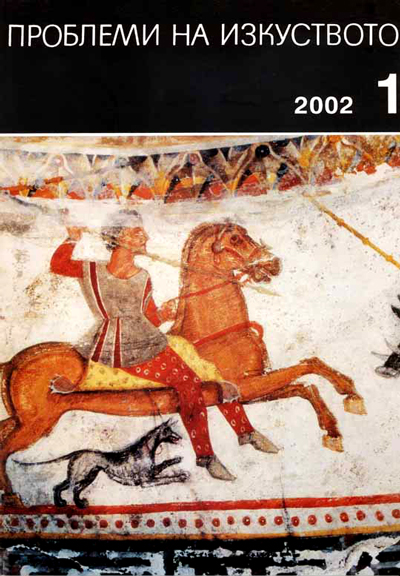Съдовете с животинска глава № 13 и 14 от съкровището от Надь Сент Миклош; форма, функция, семантика и художествена традиция
The Vessels with Animal Heads Nos 13 - 14 from the Treasure of Nagyszentmiklos: Shape, Function, Semantics and Artistic Tradition
Author(s): Oksana MinaevaSubject(s): History, Archaeology, Fine Arts / Performing Arts, Cultural history, Visual Arts, Ancient World
Published by: Институт за изследване на изкуствата, Българска академия на науките
Summary/Abstract: The article discusses only these two vessels from the treasure of Nagyszent-miklos with the aim to reconsider once again their shape, function, semantics and attribution to a certain art tradition. The shape is compared to different examples of the Ancient Near Eastern tradition and Sasanian art, Chinese tradition as represented by prehistoric vessels and these from the T'ang period, and examples from the Middle Asian Steppe tradition. The function of the vessels is defined as a cup, however, not certainly for wine, but for another possible use of storing certain sacred liquid or hard substance. The semantics of the image of the bull is discussed as associated with different meanings and rituals. A sacral function of the vessels is suggested in relation to the Old Indo-Iranian festival of Nauruz and other possible connotations in rites of passage as marriage and royal inauguration. The supposition, referring the artistic tradition that created the vessels, considers their possible belonging to a Middle Asian workshop, where the old Sasanian tradition was kept but assimilated and continued in the early Islamic metalwork tradition of the first decades of the Buyid rule.The article discusses only these two vessels from the treasure of Nagyszent-Miklos with the aim to reconsider once again their shape, function, semantics and attribution to a certain art tradition. The shape is compared to different examples of the Ancient Near Eastern tradition and Sasanian art, Chinese tradition as represented by prehistoric vessels and these from the T'ang period, and examples from the Middle Asian Steppe tradition. The function of the vessels is defined as a cup, however, not certainly for wine, but for another possible use of storing certain sacred liquid or hard substance. The semantics of the image of the bull is discussed as associated with different meanings and rituals. A sacral function of the vessels is suggested in relation to the Old Indo-Iranian festival of Nauruz and other possible connotations in rites of passage as marriage and royal inauguration. The supposition, referring the artistic tradition that created the vessels, considers their possible belonging to a Middle Asian workshop, where the old Sasanian tradition was kept but assimilated and continued in the early Islamic metalwork tradition of the first decades of the Buyid rule.
Journal: Проблеми на изкуството
- Issue Year: 2002
- Issue No: 1
- Page Range: 18-25
- Page Count: 8
- Language: Bulgarian
- Content File-PDF

